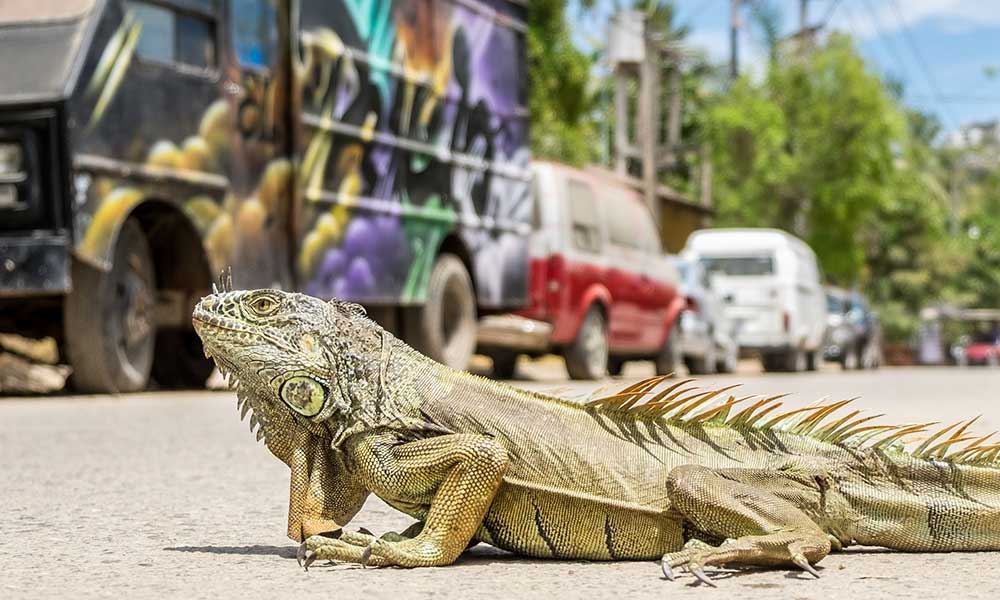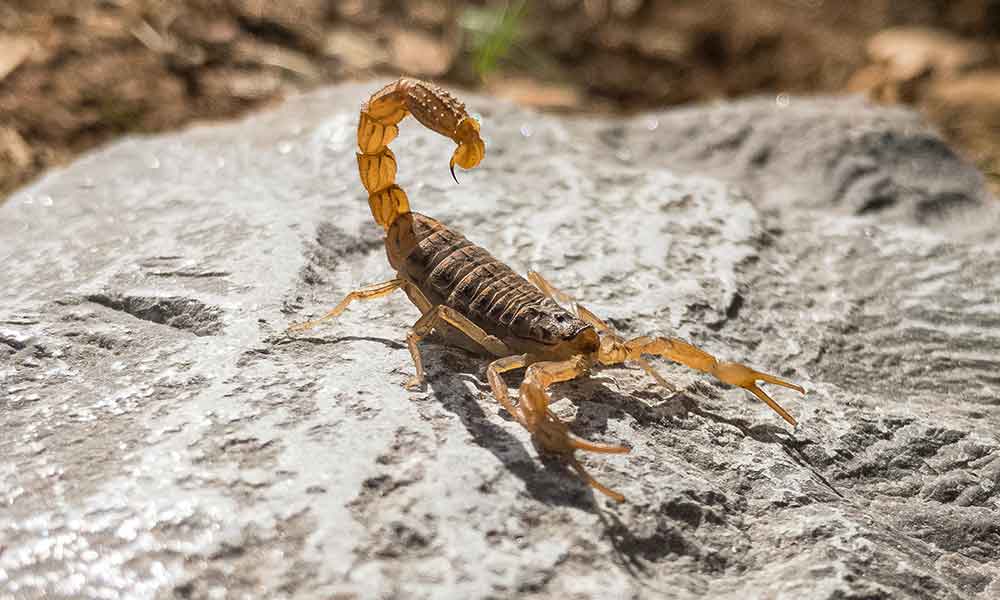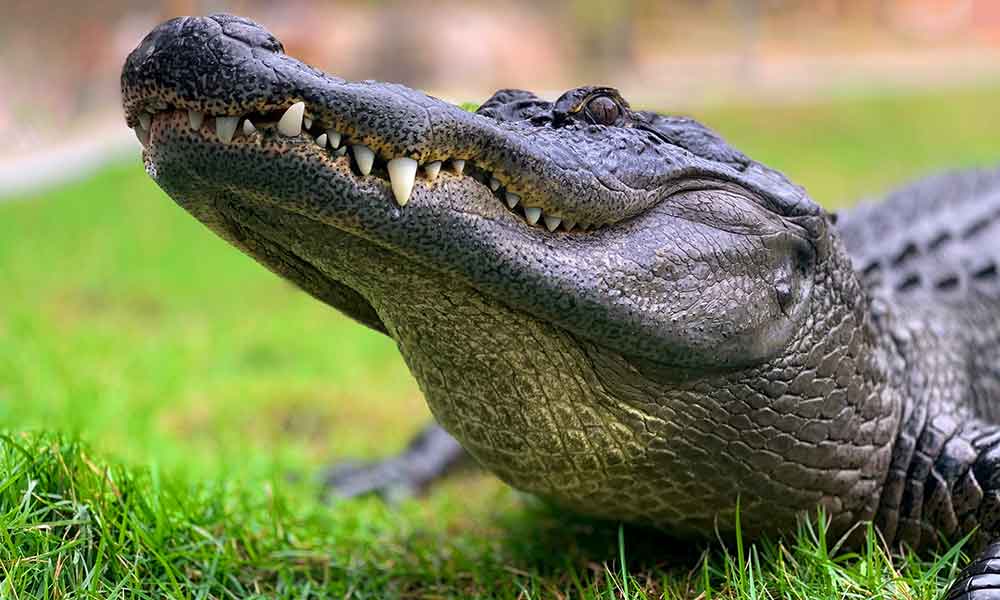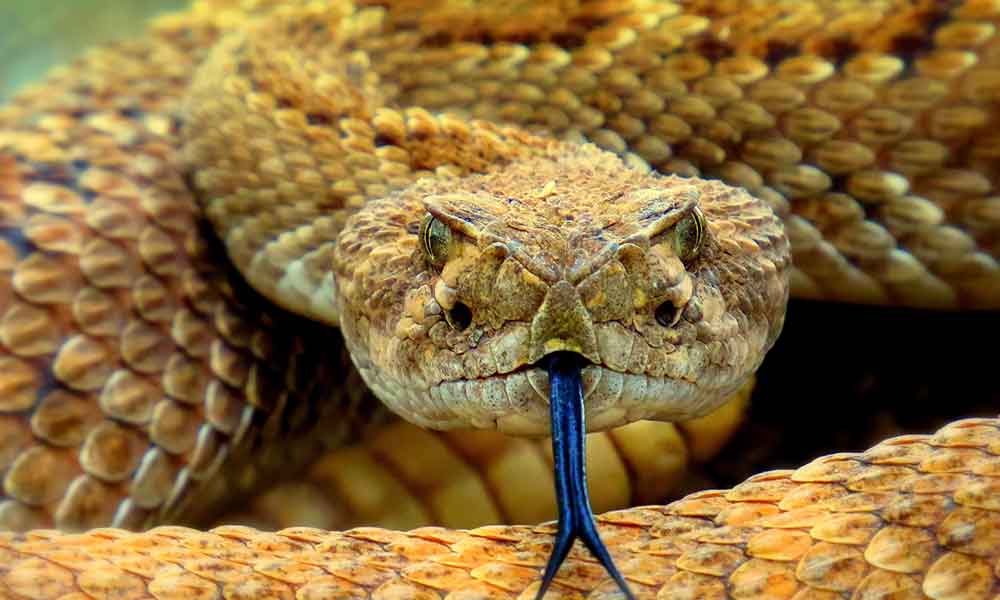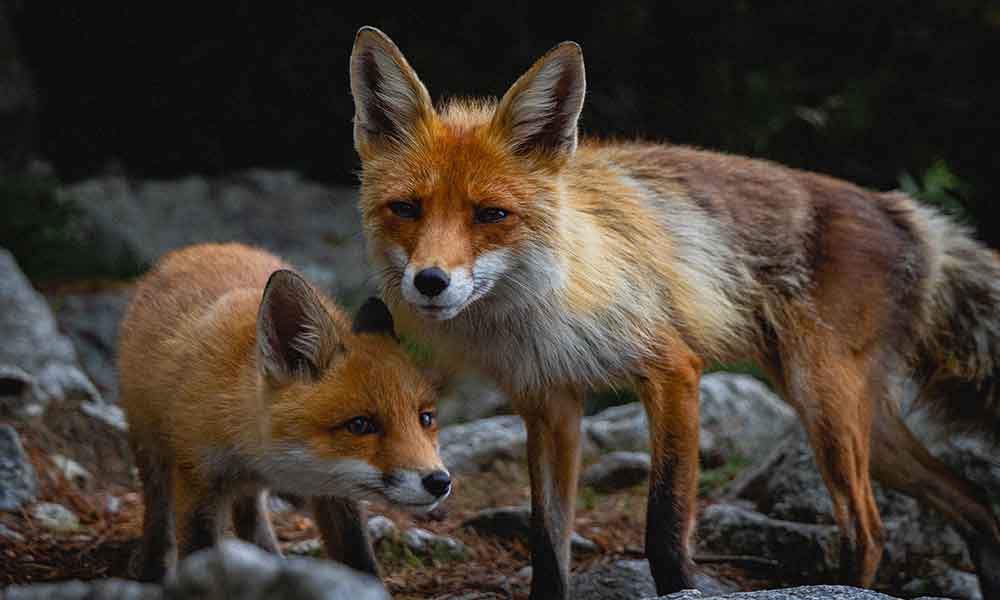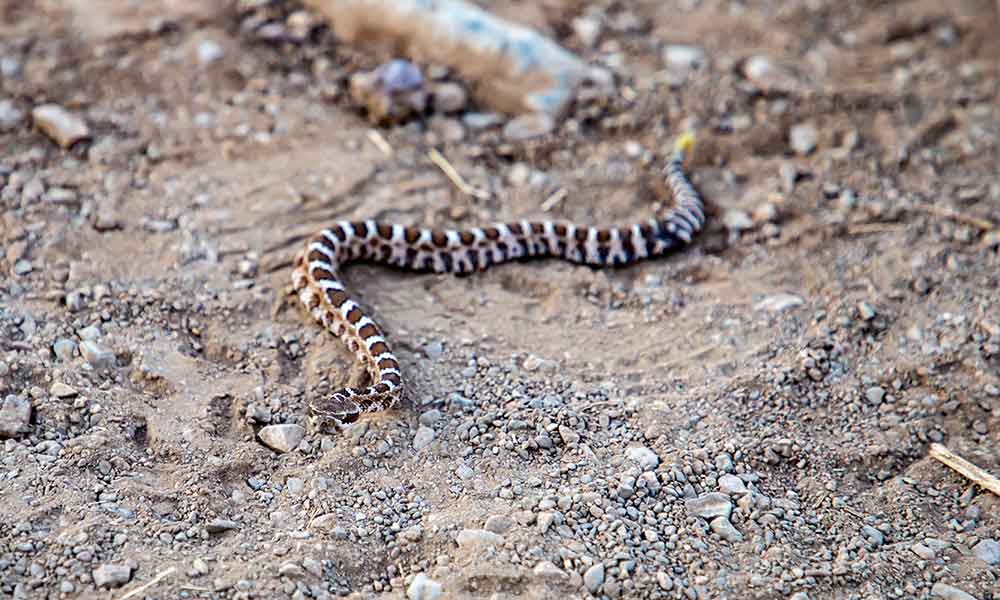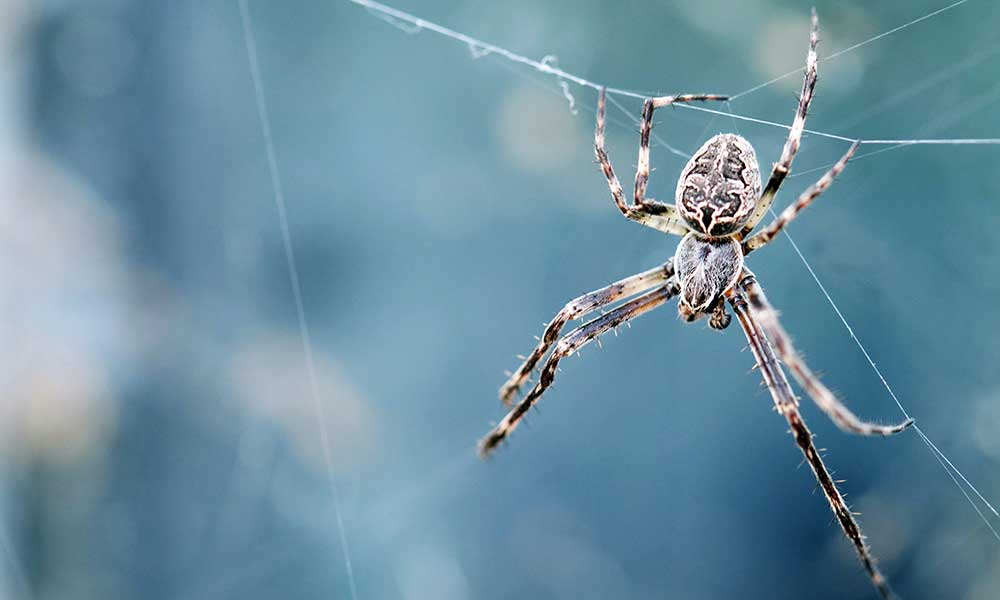American legless lizards, night lizards, glass lizards, spiny lizards—it’s fair to say that North America has its fair share of lizards. In the following guide, we’ll look at all of these creatures and more.
Are Lizards an Invasive Species?
An invasive species is one that has a negative impact on an ecosystem in which it is not native. There are many such species across the United States and Canada, including a few lizards.
Argentine black and white tegus, for instance, have recently invaded South Florida where they eat local animals and plants and reproduce in large numbers.
Other lizards have been given the same status and often enter the country as exotic pets.
What Do Lizards Eat?
Lizards can be both herbivorous and carnivorous. They eat bird eggs, plants, berries, and small animals. The exact diet depends on the animal’s species, size, and location.
Which North American Lizards are Threatened?
North America is home to many reptiles that have a near-threatened or critically endangered status. These include the alligator snapping turtle, the flat-tailed horned lizard, and the Gila monster. Green sea turtles are also considered vulnerable.
Lizard Species in North America
There are over 150 lizard species in North America and these are spread across 8 families. There are far too many to list here, but we have included some of the most notable North American species below.
Southern Five-Lined Skink (Plestiodon inexpectatus)
- Length: Up to 8.5 inches
- Food: Grasshoppers
- Habitat: Dry forested areas
- Characteristics: Body has 5 light stripes
Broad-Headed Skink (Plestiodon laticeps)
- Length: Up to 12.75 inches
- Food: Insects and spiders
- Characteristics: Adults have gray tails, but these are blue in young lizards
- Location: Georgia and the Carolinas
Western Fence Lizard (Sceloporus Occidentalis)
- Length: 2.25 to 3.5 inches
- Habitat: Most ecosystems (but not the desert)
- Characteristics: Sides of the belly are blue
- Location: California
Eastern Fence Lizard (Sceloporus Undulatus)
- Length: 1.5 to 3.5 inches
- Habitat: Open Forests
- Characteristics: Colors include gray, white, red, black, and brown.
- Location: New York, Northern Florida
Common Side-Blotched Lizard (Uta Stansburiana)
- Length: 1.5 to 2.5 inches
- Habitat: Sandy or rocky soil
- Characteristics: Black/Blue blotches on chest
- Location: Washington, California, and Mexico
Desert Spiny Lizard (Sceloporus magister)
- Length: 3.25 to 5.5 inches
- Food: Insects and larvae
- Characteristics: Rust-colored sides
- Location: San Francisco and Los Angeles
Prairie Lizard (Sceloporus consobrinus)
- Length: 3.5 to 7.5 inches
- Food: Insects and spiders
- Characteristics: Brown stripe down the spine
- Location: Missouri
Great Plains Skink (Plestiodon obsoletus)
- Length: Up to 13 inches
- Food: Insects, spiders, snails, spiders
- Habitat: Prairies
- Characteristics: Brown markings
Many-lined Skink (Plestiodon multivirgatus)
- Length: Up to 7.5 inches
- Food: Ant larvae and insects
- Habitat: Mountains, city dumps, vacant lots
- Other Names: Variable Skink, Northern Many-Lined Skink
Texas Horned Lizard (Phrynosoma cornutum)
- Length: 2.5 to 5 inches
- Food: Ants, beetles, grasshoppers
- Habitat: Deserts
- Characteristics: Yellow to red or gray; stripe on the back
Coal Skink (Plestiodon anthracinus)
- Length: Up to 7 inches
- Habitat: Nearby streams
- Characteristics: Four light stripes
- Other Names: Southern Coal Skink, Northern Coal Skink
Common Five-Lined Skink (Plestiodon fasciatus)
- Length: Up to 8.75 inches
- Food: Spiders, beetles, and insects
- Habitat: Wooded areas
- Characteristics: Stripes that fade with age
Southern Five-Lined Skink (Plestiodon inexpectatus)
- Length: Up to 8.5 inches
- Food: Grasshoppers
- Habitat: Dry forested areas
- Characteristics: 5 light stripes
Greater Short-Horned Lizard (Phrynosoma hernandesi)
- Length: 1.75 to 4.75 inches
- Food: Ants, wasps, grasshoppers, snails, spiders, beetles, caterpillars
- Habitat: Semi-arid areas
- Characteristics: Horns are short and stubby
Six-Lined Racerunner (Aspidoscelis sexlineata)
- Length: 2.25 to 3.75 inches
- Food: Termites
- Characteristics: Broad stripes and light stripes
- Other Names: Prairie Racerunner, Eastern Six-Lined Racerunner
Southern Prairie Skink (Plestiodon obtusirostris)
- Length: Up to 8 inches
- Food: Mostly eat insects
- Habitat: Streambeds
- Characteristics: Blue tails in young lizards
Common Five-Lined Skink (Plestiodon fasciatus)
- Length: Up to 8.75 inches
- Food: Spiders, beetles, and insects
- Habitat: Wooded areas
- Characteristics: 5 stripes (fade with age)
Northern Prairie Skink (Plestiodon septentrionalis)
- Length: Up to 9 inches
- Habitat: Open plains and streambeds
- Characteristics: Light stripes bordered
- Location: Southwestern Manitoba Canada
Little Brown Skink (Scincella lateralis)
- Length: Up to 5.75 inches
- Habitat: Gardens, urban areas, and on the forest floor
- Characteristics: White belly
- Location: Eastern and Central United States
Eastern Glass Lizard (Ophisaurus ventralis)
- Length: 18 to 43 inches
- Food: Insects and invertebrates
- Habitat: Grasslands, Wet Meadows, Pine Forests, Hardwood Groves
- Characteristics: Greenish to black with a light yellow or tan belly
Florida Worm Lizard (Rhineura floridana)
- Length: 7 to 11 inches
- Habitat: Underground
- Characteristics: Pale or pinkish all over
- Location: Florida and Georgia
Pygmy Short-Horned Lizard (Phrynosoma douglasii)
- Length: 1.25 to 2.5 inches
- Food: Ants
- Habitat: The shrub-steppe
- Location: Washington
Desert Horned Lizard (Phrynosoma platyrhinos)
- Length: 2.5 to 3.75 inches
- Habitat: Regions with lots of cacti and saltbush
- Characteristics: Dark spots on the back and neck
- Location: Oregon and Wyoming
Slender Glass Lizard (Ophisaurus attenuatus)
- Length: 22 to 47 inches
- Habitat: Open woodlands and prairies
- Characteristics: White markings on the center of their scales
- Location: Waushara, Marquette
Island Glass Lizard (Ophisaurus compressus)
- Length: 15 to 24 inches
- Habitat: Flatwoods and wetlands
- Characteristics: Brown with dark stripes
- Location: Georgia and the Carolinas
Ornate Tree Lizard (Urosaurus ornatus)
- Length: 1.5 to 2.25 inches
- Habitat: Riverbanks
- Characteristics: Yellow, blue/green in males; white, orange/yellow in females
- Location: Southwestern United States
Mimic Glass Lizard (Ophisaurus mimicus)
- Length: 15 to 26 inches
- Habitat: Longleaf pine flatwoods
- Characteristics: Stripe down the middle
- Location: Carolinas, Georgia
California Legless Lizard (Anniella pulchra)
- Length: 4.5 to 7 inches
- Food: Insects, moths, spiders
- Habitat: Beaches and river banks
- Characteristics: Dark line on back; dark blotches on the belly
Western whiptail (Aspidoscelis tigris)
- Length: 2.5 to 5 inches
- Habitat: Open forests and arid scrubland
- Characteristics: Rust-colored patches
Western Skink (Plestiodon skiltonianus)
- Length: Up to 8.5 inches
- Food: Insects, spiders
- Habitat: Grasslands and pine-oak forests
- Other Names: Great Basin Skink and Skilton’s Skink
Long-Nosed Leopard Lizard (Gambelia wislizenii)
- Length: Up to 17 inches
- Food: Leaves, blossoms, berries, insects, spiders, small rodents, and snakes
- Habitat: Rocky outcroppings
- Characteristics: Gray, brown, pink, or yellowish-brown with dark spots
Common Sagebrush Lizard (Sceloporus graciosus)
- Length: 1.9 to 3.5 inches
- Food: Scorpions and insects
- Habitat: Sagebrush fields, grasslands, and dunes
- Characteristics: Light stripes on either side
What is the Largest Lizard Species in North America?
Gila monsters (Heloderma suspectum) are the largest lizard species in North America. This near-threatened species is slow-moving and can span up to 2 feet in length.
Gila monsters live in the southwestern United States, as well as Mexico and Guatemala.
What are the Main Types of Lizards?
There are clearly a lot of lizards in North America. For the sake of simplicity, these creatures are often categorized as follows:
Infraorder Iguania
This is the largest group of lizards and spans over 1,000 species. Many species in this category are also known as “New World Lizards”, as they are mainly found in the Americas.
Infraorder Iguania lizards can also be found in parts of Asia, Africa, and Europe. The order includes iguanas, agamas, and chameleons.
Infraorder Scincomorpha
This category includes skinks—lizards that have very small legs. They eat insects and are diurnal.
Infraorder Gekkota
Legless lizards, geckos, and blind lizards are part of this category.
These lizards have flat unforked tongues and either short limbs or no limbs at all. They can look like snakes.
Infraoder Amphisbaenia
These long-bodied lizards are often limbless and have bodies that make them look like earthworms. They can be seen all over North America, as well as in Europe, South America, Central America, and Africa.
Infraorder Anguimorpha
A large group of lizards that includes Gila monsters, monitor lizards, and slow worms.
What are Night Lizards?
Night lizards are so named because they were once thought to be nocturnal. However, they do appear during the day and lead very secretive lives, often living under damp logs or in the crevices of rocks.
What are Glass Lizards?
Glass lizards are long legless lizards that look a lot like snakes. They are called glass snakes because the tail is easily broken off.

